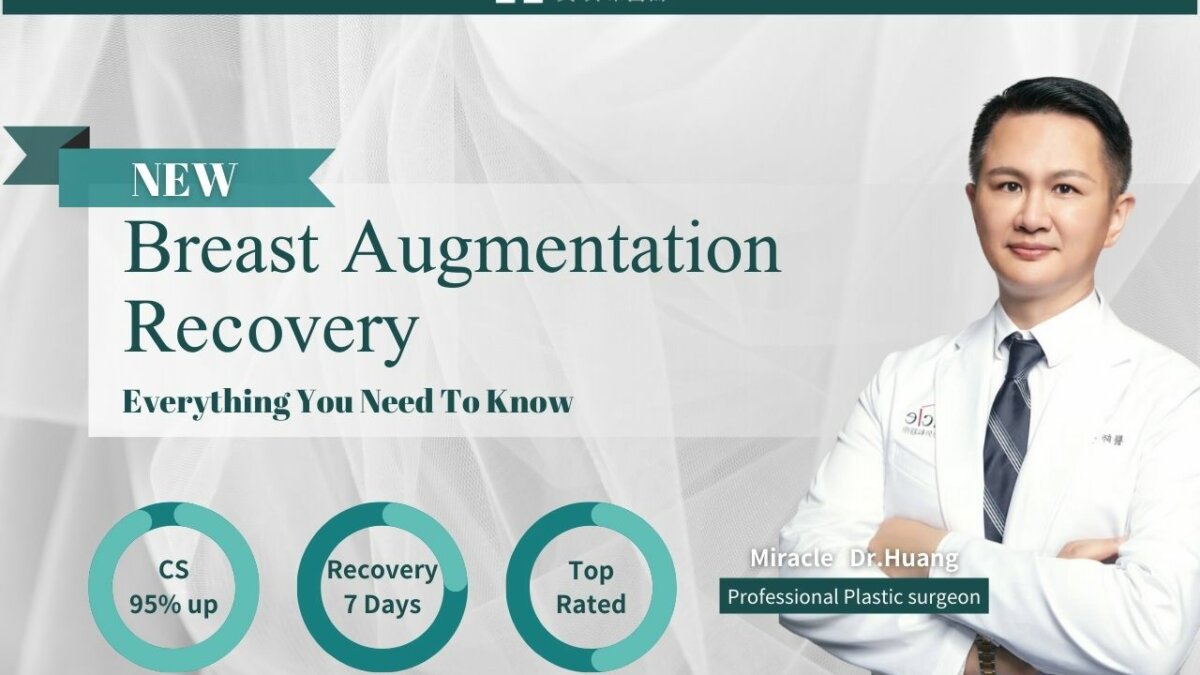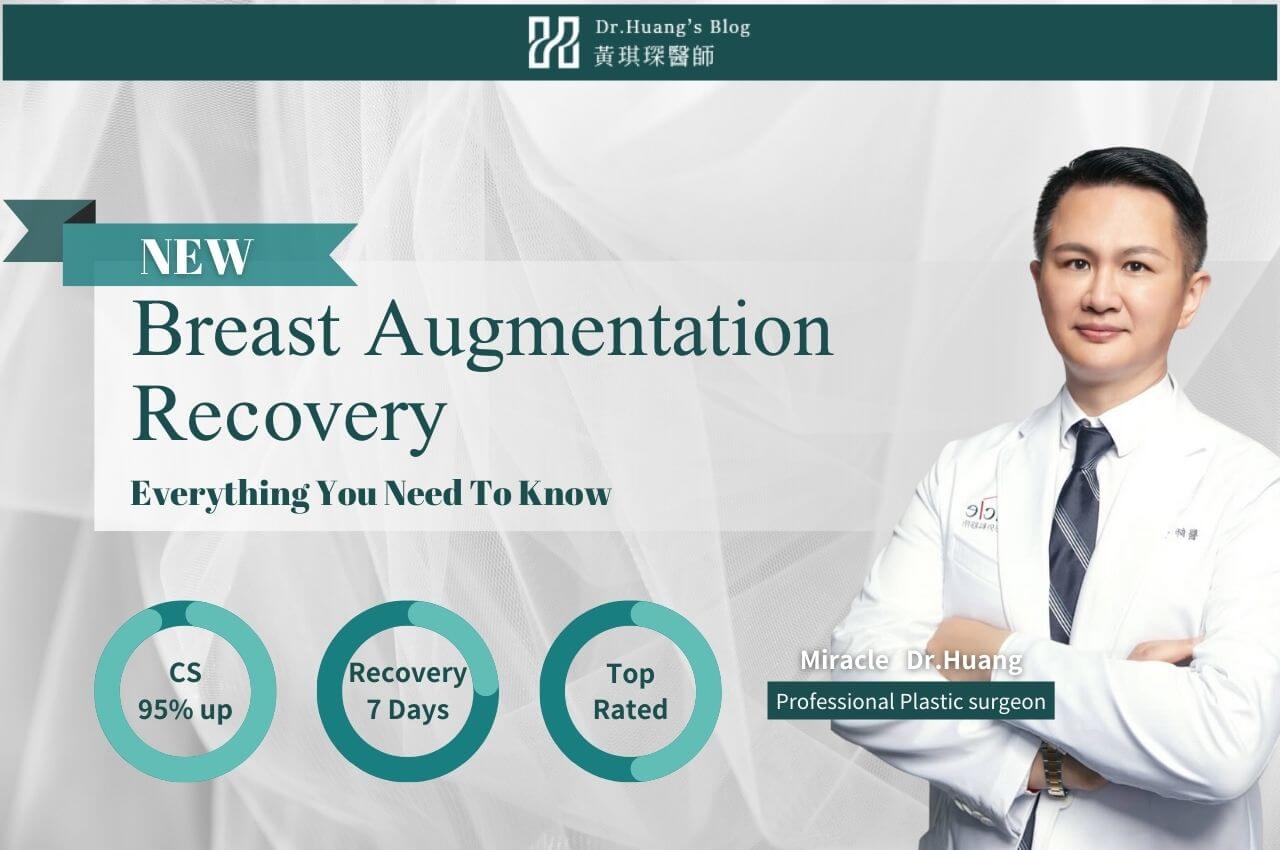
Breast Augmentation Recovery: Swelling Reduction and Dietary Tips

The first few months after breast augmentation surgery are crucial for a successful recovery.
Proper post-operative care can significantly improve the results of your procedure, ensuring a softer, more natural-looking chest.
In this article, we'll discuss everything you need to know about caring for yourself after breast augmentation, including diet, massage, and overall care.
By following these guidelines, you can maximize your chances of a successful recovery and enjoy the results of your breast augmentation for years to come.
Breast augmentation recovery time can be divided into three main stages: wound healing, position adjustment, and overall softness and shape.
Regardless of the incision location (armpit, areola, or inframammary fold), external wounds typically heal within 7 to 10 days. However, internal tissue repair takes longer.
Due to the sudden increase in breast volume, the lower part of the breast may appear higher than the upper part, especially with incisions other than the inframammary fold.
This is because the lower skin hasn't had time to stretch to accommodate the increased volume. This imbalance usually improves within 1 to 3 months.
Achieving desired softness and shape can take 3 to 6 months.
For those with flatter chests (e.g., A cup), it may take up to a year for the breasts to fully soften due to the significant increase in volume.
And of course, a person's physical condition significantly impacts breast augmentation recovery. For example, factors like frequent late nights, poor immunity, and malnutrition can prolong recovery time.
If you supplement nutrition before and after surgery, such as through IV drips containing vitamins, minerals, and amino acids, you can effectively improve your body's repair ability, accelerate wound healing, and shorten recovery time.
Breast augmentation involves creating a space in the breast and inserting a silicone gel implant. The sudden increase in breast volume can cause significant swelling and pain.
Women who have experienced breastfeeding may be more tolerant to the stinging sensation after breast augmentation.
In contrast, younger women who undergo the procedure often experience noticeable swelling.
Breast augmentation procedures are generally categorized into subfascial and dual-plane, the latter being placed beneath the pectoralis major muscle.
With dual-plane implants, the stretching of the muscle is more noticeable, resulting in a soreness similar to the discomfort experienced after an intense chest workout.
Conversely, subfascial implants, being placed in a shallower layer, don't involve as much muscle tension and therefore cause less pain.
Breast augmentation typically doesn't damage the fourth intercostal nerve, which provides sensation to the nipple.
However, due to advancements in silicone gel implants and the increasing demand for larger implants, the outer lower portion of the skin around the nipple might experience a numb or tingling sensation.
This is usually caused by the implant's position and pressure on the nerves and typically improve within 3 to 6 months.
Breast augmentation involves creating a pocket in the breast, temporarily connecting it to the outside. Even after the incision is closed, it takes time for the air and fluid inside to be absorbed.
During this period, it's normal to hear occasional gurgling or air sounds.
As mentioned earlier, the rapid increase in breast size can cause the skin to become tight and compress the chest cavity. Coupled with pain, this can make breathing more difficult and lead to a feeling of pressure.
Some individuals may experience shallower and more rapid breathing, shortness of breath, or even wheezing. These symptoms typically improve within one to two weeks as the swelling subsides.
As the first point, the rapid enlargement of the breasts can cause the skin to stretch, much like during pregnancy.
It is important to use moisturizing lotions or firming creams to improve skin condition and prevent the development of stretch marks.
After the initial one to two weeks of recovery, most people gradually adjust to the skin tightness and discomfort.
As swelling subsides and activity increases, especially at night, you may experience breast tightness, pain, muscle soreness, or discomfort related to the ongoing healing process.
Generally, as long as the frequency of these symptoms doesn't increase, they will gradually improve.
The appearance of bruising often depends on the surgical technique. Endoscopic surgery, due to less tissue dissection and bleeding, results in a lower incidence of bruising.
In traditional surgery, due to the difficulty in controlling bleeding, bruising often appears in the lower part of the chest and may even extend to the abdomen.
Bruising is most noticeable in the first two weeks after surgery and gradually fades to a yellowish color as it is absorbed.
Generally, it takes about a month for bruising to fully resolve. Additionally, bruising indicates bleeding, so the bruised area may be more tender to touch.
Unleash Your Inner Confidence👉BOOK NOW
After breast augmentation surgery, you can generally maintain a normal diet or supplement with collagen to accelerate your body's recovery.
However, it's advisable to avoid foods that are too hot or promote blood circulation for the first one to two weeks after surgery.
Spicy and irritating foods should also be reduced to alleviate post-operative fluid retention and swelling.
After about a month, most dietary restrictions following breast augmentation can be relaxed.
Post-breast augmentation massage should now be defined as a passive chest movement.
Traditionally, because smooth-surface implants required more space, it was recommended to perform a cross-shaped push in eight directions within the space.
In the past, due to traditional breast augmentation surgery techniques, the space dissection was not very complete, and massage was needed to push the implant into place.
Nowadays, with the use of endoscopy (armpit incision) or direct visualization (areola incision and inframammary fold), the space can be completely operated on. It is only necessary to press on the edges to maintain the size of the space.
During the post-breast augmentation swelling period, gentle massage or pushing can improve blood circulation around the breast, reducing swelling and accelerating the restoration of the breast's naturalness and softness.
As a general rule, for textured implants, it is recommended to start passive pushing or lymphatic drainage to improve circulation 3 to 4 weeks after surgery.
Since textured implants have a rougher surface, excessive pushing on a freshly operated wound may lead to seroma formation. This is an important point to remember when performing massage.
Unleash Your Inner Confidence👉BOOK NOW
It is recommended to schedule regular follow-up appointments after breast augmentation.
Following your own intuition or the advice of friends regarding massage or manipulation without consulting your surgeon is not advised. Because your breast augmentation surgeon is the most knowledgeable about the post-operative changes.
If you notice any abnormalities in the position of your implants, or experience sudden breast swelling or pain, it is best to schedule a follow-up appointment as soon as possible.
Additionally, it is important to monitor your recovery progress to ensure you are healing on schedule.
Typically, one month after breast augmentation, the implants have settled into a more stable position and the overall shape appears more natural.
At the one-month follow-up appointment, your doctor will assess the healing of your incisions and the placement of the silicone implants.
If you experience sudden or increasing pain, or if your breasts become suddenly swollen and painful after vigorous exercise, it is important to schedule a follow-up appointment with your doctor.
These symptoms may indicate bleeding caused by trauma or excessive movement.
Generally, the most common complication occurring one-month post-augmentation is bleeding within the surgical site.
However, most patients experience a stable recovery after one month, unless traditional surgical techniques were used, which may increase the risk of bleeding.
Unleash Your Inner Confidence👉BOOK NOW
Below, we've compiled a list of frequently asked questions about breast augmentation recovery, based on discussions found on popular online forums like Dcard and PTT.
The duration of wearing a compression bra after breast augmentation typically depends on the incision site.
If the surgery was performed using an endoscopic approach through the armpit, the incision is made from top to bottom, and it's generally recommended to wear the compression bra for one to one and a half months.
However, if the incision was made along the inframammary fold, the upper dissection plane is relatively smaller due to the bottom-up approach, so wearing a compression bra for about three weeks is usually sufficient.
If a high-quality waterproof dressing is used after breast augmentation, you can take a shower as long as you can move your arms comfortably.
For washing your hair, since you need to lift your arms above your head, you may experience pain or discomfort. It is recommended that someone else helps you wash your hair during the first week after surgery.
The time it takes for breast implants to look natural varies depending on individual body conditions.
If the breast skin is relatively loose, or if you have had pregnancies and experienced skin laxity, the breasts can appear soft and natural within 1 to 3 months after surgery.
For women with tighter skin and smaller breasts, it may take 3 to 6 months or even longer for the breasts to achieve a soft and natural appearance.
If you undergo a combined procedure of breast augmentation and fat grafting, the naturalness and fullness of the breasts will be better within 3 to 6 months compared to breast augmentation alone.
The swelling and discomfort after breast augmentation usually subside within 1 to 4 weeks.
As a newer material that does not require massage, Motiva implants have a recovery period that is not significantly different from other types of breast implants.
However, in terms of achieving a natural appearance and controlling the dissection plane in the breast tissue, the surgeon's experience and technique play a more critical role in creating the surgical space.
Although Motiva implants may appear slightly fuller in the upper part initially, the skin below the nipple will relax over time, allowing the implant to settle into a more natural position.
Compared to other implant materials, Motiva implants generally offer a fuller appearance.
In terms of shape, the breasts will look much more natural one month after surgery compared to the first post-operative week.
By the second month, the skin below the nipple is usually less tight, reducing the fullness in the upper part, resulting in a more natural appearance.
Speaking of comfort, the tightness in the breasts and discomfort when stretching the arms have gradually improved by the first or second month, so there is not a significant difference in comfort between the two time points.
However, the breasts will definitely feel softer at the second month compared to the first month.
Yes, the recovery period for a second breast augmentation is generally longer than the first due to the need to remove scar tissue (capsule) and create new space for the implant.
However, the pain level is often lower for the second procedure, especially if the implant size is similar to the first, because they've already experienced the post-operative swelling.
To speed up recovery, patients can consider using recovery infusions to improve their overall health, making the recovery period easier.
Miracle Aesthetic Clinic in Taiwan specializes in breast augmentation surgery. We have extensive experience in various augmentation procedures, as well as post-operative care, including massage and dietary advice.
If you have any questions about breast augmentation or are considering the procedure, please feel free to contact our specialists!
Unleash Your Inner Confidence👉BOOK NOW